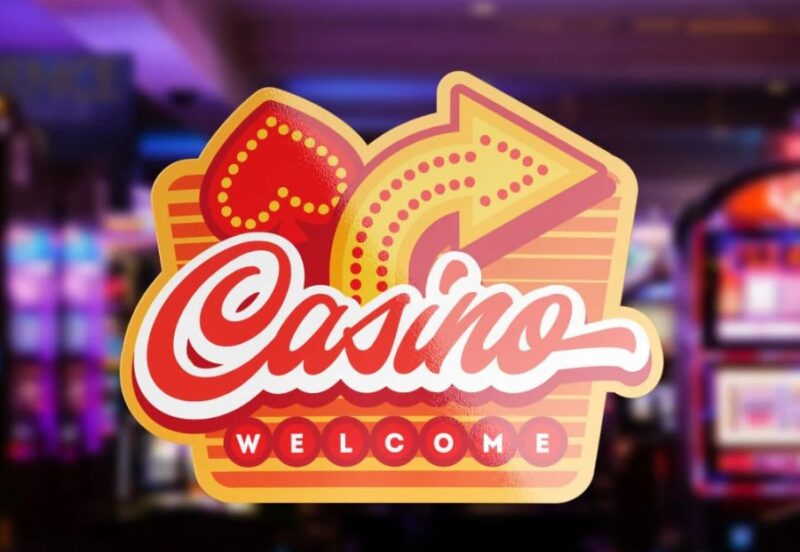If you think of online casinos, your thoughts probably immediately turn to strobing neon lights, spinning virtual slot machines whirring with a comforting “clink,” or the thrill of swiping a digital card and receiving that mythical blackjack.
But what you don’t see, what’s happening behind the scenes, is arguably even more thrilling. Behind every jackpot celebration, every carefully timed bonus offer, and every new game suggestion is a massive, humming machine powered by data. And if you’re in the world of business, especially digital consumer businesses, what online casinos are doing with data is well worth your attention.
So much about online casinos is an exercise in behind-the-scenes data-driven decision-making. And they are not using data in some sort of passive, “let’s look at the charts next quarter” fashion. No, this is precision-level experimentation, personalization, and optimization in real-time – basically a gold standard for customer experience in digital environments.
Welcome to the Casino, Where Data Rules
At the surface, online casino platforms look like entertainment venues. Their core job is to create engaging, fun, and sometimes thrilling gaming experiences for players around the globe. But peel back the layers, and you’ll find that they function a lot more like tech companies – ones that live and breathe analytics.
From how the game lobby is shown, to a button color, to when a bonus is given, to preferred payment methods – it’s all data-driven. This has resulted in casinos catering certain services to consumers, such as how to deposit with Interac at this casino, based on collected data. These are not arbitrary creative guesses. These are data-driven, based on an ever-shifting set of user behavior. And yes, it’s as accurate as it sounds.
Online casinos track all the steps a player makes on the website. Not only the games they play, but for how long, at what rate they bet, if they dawdle before taking action, how they pay and deposit money, or if they withdraw from a game in the middle. This close-to-the-nanometer tracking allows operators to build extremely detailed user profiles, each a map of personal activity.

What Do They Use, Exactly
Let’s bucket it. Online casino data types that are obtained can be categorized into a handful of buckets:
- Behavioral data ─ It’s all the stuff the user does on the site – clicks, scrolls, wagers, session length, frequency of play, game-switching patterns. It’s the foundation upon which user journeys are mapped.
- Transactional data ─ The amount of money players are depositing, withdrawing, losing, or winning. Deposit habits (e.g., regular weekly or monthly patterns) also become markers of player value and loyalty.
- Device and platform data ─ Casinos track what devices individuals are using – mobile, tablet, or desktop – and what time of day they tend to log in. Even location data can be leveraged to personalize experiences.
- Promo engagement ─ When an offer is served to a player, do they open it? Click it? Ignore it completely? This kind of information gives back to what promotions are worth serving – and to whom.
- Sentiment and support data ─ Less talked-about, customer service chats, survey responses, and feedback forms yield qualitative information that sharpens experience at scale.
Simply put, if it can be measured, it can be optimized.
Personalization ─ The Data-driven Key to Retention
Where personalization is concerned, this data really comes into its own. Mass-market gambling experience days are over. These days, if you’ve ever played a game, there’s a pretty good bet that the platform already knows what types of games you’re going to want to play, what promotions you’re most likely to be responsive to, and when during the day to notify you with a reminder or promotion.
For example, if a player consistently plays high-volatility slots and funds their account primarily late in the evening, the system might send new high-stakes slots around 10 p.m. along with an offer tied to their history of expenditure. It’s not merely a matter of generating revenue (though that certainly figures into it) – it’s about providing an experience that people perceive as hassle-free and curated. And it’s that, which generates loyalty.

A/B Testing as a Way of Life
If you’ve ever run a single A/B test on your website or app, multiply that by about 1,000 – and you’re still not close to the pace at which online casinos test things. These companies test everything. Not just features, but fonts, layout configurations, bonus types, loading animations, sound effects, button positions – you name it. Every element that touches the user interface is a candidate for experimentation.
Even relatively small adjustments, such as making the “spin” button red rather than green, or presenting one user with a 50% match bonus and another with an offer of free spins, can yield unexpected insights into player psychology. Results from such tests are usually recorded in real time, and operators can shift their approaches on the fly. This intense testing and iteration approach is something that the majority of consumer tech firms talk about, but few actually manage to execute. Casinos, however, have made it second nature.
The Future Spotted ─ VIPs and Burnout
Of course, the ultimate flex is predictive analytics. Online casinos don’t just want to know what a player did – they want to anticipate what he’ll do next. Using historical information, sites can also forecast who among the players is likely to be a VIP, or a high-value player. These are players who play frequently and at greater stakes. As soon as they are recognized, VIPs are given individualized attention, from exclusive offers to tailored onboarding, and even personal account managers in some cases.
There is yet another part of predictive modeling, however: Risk identification. Casinos are under increasing regulatory pressure to promote responsible gambling. According to figures, they are able to detect uncharacteristic patterns of behavior that may indicate problem gambling. For instance, if a player unexpectedly doubles the rate at which they deposit, starts gambling for much longer hours, or exhibits erratic behavior like constantly shifting game types within a short period, the website can trigger automated warnings or suggest cooling-off periods.
Some even have proactive elements like budget reminders, play time restraint, and short-term self-exclusion, all powered by behavioral analysis. It is both a moral duty and a business viability in the long run.

What Other Businesses Can Learn
You don’t need to run a slot machine empire to take notes from the online casino world. At their core, these platforms are doing what any good digital product should be doing: Learning from users and improving the experience with every click. Whether you’re running an e-commerce site, a subscription service, or a mobile app, the core principles remain the same:
- Track user behavior at a detailed level.
- Test frequently and iteratively.
- Make it personal based on real facts, not estimates.
- Use predictive analytics to drive trends
What online casinos show us is that deep customer understanding isn’t nice to have – it’s a differentiator.
Final Thoughts ─ Behind the Slots, a Powerhouse of Data
The next time you log in to an online casino, remember this: What you see on the screen is only the tip of the iceberg. Somewhere beneath it is a rapidly optimized machine, crunching numbers, testing hypotheses, and readjusting in real-time to keep you entertained and engaged.








